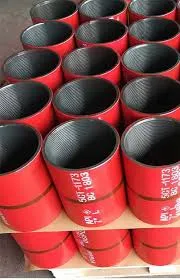- Afrikaans
- Albanian
- Amharic
- Arabic
- Armenian
- Azerbaijani
- Basque
- Belarusian
- Bengali
- Bosnian
- Bulgarian
- Catalan
- Cebuano
- Corsican
- Croatian
- Czech
- Danish
- Dutch
- English
- Esperanto
- Estonian
- Finnish
- French
- Frisian
- Galician
- Georgian
- German
- Greek
- Gujarati
- Haitian Creole
- hausa
- hawaiian
- Hebrew
- Hindi
- Miao
- Hungarian
- Icelandic
- igbo
- Indonesian
- irish
- Italian
- Japanese
- Javanese
- Kannada
- kazakh
- Khmer
- Rwandese
- Korean
- Kurdish
- Kyrgyz
- Lao
- Latin
- Latvian
- Lithuanian
- Luxembourgish
- Macedonian
- Malgashi
- Malay
- Malayalam
- Maltese
- Maori
- Marathi
- Mongolian
- Myanmar
- Nepali
- Norwegian
- Norwegian
- Occitan
- Pashto
- Persian
- Polish
- Portuguese
- Punjabi
- Romanian
- Russian
- Samoan
- Scottish Gaelic
- Serbian
- Sesotho
- Shona
- Sindhi
- Sinhala
- Slovak
- Slovenian
- Somali
- Spanish
- Sundanese
- Swahili
- Swedish
- Tagalog
- Tajik
- Tamil
- Tatar
- Telugu
- Thai
- Turkish
- Turkmen
- Ukrainian
- Urdu
- Uighur
- Uzbek
- Vietnamese
- Welsh
- Bantu
- Yiddish
- Yoruba
- Zulu
Understanding API Casing Sizes and Their Importance in Oil and Gas Industry
Understanding API Casing Sizes A Comprehensive Overview
The exploration and extraction of resources from beneath the earth’s surface involve complex processes, one of which is the drilling for oil and gas. Central to this operation are API casing sizes, which are fundamental components of drilling operations. API, or the American Petroleum Institute, has established a standardized set of specifications for various casing sizes that ensure safety, compatibility, and efficiency in the drilling process. This article aims to delve into the significance of API casing sizes, the various types available, and their applications in the field.
Casing is a series of pipes that are installed in the wellbore after it has been drilled. Its primary purpose is to provide structural integrity to the well, prevent the collapse of the surrounding formations, and isolate the hydrocarbons from water-bearing zones. API specifications ensure that the casing can withstand the challenges of the geological environment, including high pressures and extreme temperatures, making the drilling operation safe and efficient.
Understanding API Casing Sizes A Comprehensive Overview
1. Surface Casing This is the first layer of casing installed in the well and is typically 13.375 inches in diameter. It is used to protect freshwater zones and provide a stable foundation for subsequent casings. The surface casing must be strong enough to withstand external pressures and is critical for ensuring the safety of the drilling operation.
api casing sizes

2. Intermediate Casing Following the surface casing, intermediate casing is installed to further stabilize the wellbore and isolate any high-pressure formations that may be encountered during drilling. Intermediate casings usually range from 9.625 to 12.25 inches in diameter and are essential for managing pressures and preventing blowouts.
3. Production Casing This final layer of casing is used to complete the well after drilling is finished. It is typically smaller in diameter, ranging from 4.5 to 7.625 inches, and is designed to allow hydrocarbons to flow into the wellbore while preventing the ingress of water and other unwanted substances.
API casing sizes are not only crucial for maintaining well integrity but also play an essential role in optimizing production efficiency. The choice of casing size can influence aspects such as the flow rate of hydrocarbons, the ease of maintenance, and the overall cost of the drilling operation. Engineers must carefully consider geological surveys, reservoir characteristics, and operational requirements when selecting the appropriate casing sizes for a specific well.
Moreover, the API provides guidelines and standards that assist manufacturers in producing casing that meets the required specifications. This standardization ensures that casings from different manufacturers are compatible and can be used interchangeably in the field. Such consistency is vital for maintaining the safety and reliability of drilling operations worldwide.
In conclusion, API casing sizes are a fundamental aspect of oil and gas drilling operations. By ensuring the structural integrity of wells, isolating different geological formations, and facilitating the safe extraction of hydrocarbons, these casings play a pivotal role in the industry. Understanding the various types and sizes of API casing, along with their specific applications, is crucial for professionals involved in drilling and production activities, contributing to the efficiency and safety of oil and gas extraction processes. As technology continues to advance, the evolution of casing sizes will undoubtedly follow suit, adapting to meet the ever-changing demands of the energy sector.
-
Well Casing Extension Couplings – Applications and InstallationNewsJun.06,2025
-
Types of Crossover Subs in Drilling & CompletionNewsJun.06,2025
-
Key Features of High-Quality Tubing Pup JointsNewsJun.06,2025
-
Installation and Maintenance Tips for Steel Couplings for PipeNewsJun.06,2025
-
How to Select the Right Pup Joint for Oil & Gas OperationsNewsJun.06,2025
-
Applications of Stainless Steel Pipe CouplingsNewsJun.06,2025







